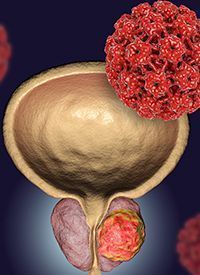Article
INBRX-109 Granted Orphan Drug Designation in Europe for Chondrosarcoma
Author(s):
The European Commission has granted an orphan medicinal product designation to INBRX-109 for use as a potential therapeutic option in patients with chondrosarcoma.

The European Commission has granted an orphan medicinal product designation to INBRX-109 for use as a potential therapeutic option in patients with chondrosarcoma, according to an announcement from Inhibrx, Inc.1
The decision follows a positive opinion issued by the European Medicines Agency. With this designation comes select benefits, such has reduced regulatory fees, assistance with clinical protocol, and the potential for up to 10 years of market exclusivity post regulatory approval.
“We are highly optimistic about the potential of INBRX-109 in chondrosarcoma to address a high unmet medical need,” Mark Lappe, chief executive officer of Inhibrx, stated in a press release. “The positive opinion issued by the EMA is excellent news and acknowledges the potential of INBRX-109 as a treatment for patients throughout Europe who suffer from this debilitating, rare condition.”
A heterogenous group of malignant bone tumors, chondrosarcomas represent the third most common type of primary bone cancer following multiple myeloma and osteosarcoma.2 This disease is known to form in the bone cartilage, usually starting in the pelvis, scapula, ribs, or at the ends of long bones.
Although the conventional subtype of this disease is usually treated with surgical resection, it has been found that cases that are unresectable or metastatic can be resistant to chemotherapy, radiation, and targeted therapies; in these patients, outcomes continue to be poor. Historically, the median progression-free survival (PFS) in those who are administered inactive agents or placebo has been less than 4 months.2
Despite the fact that many agents have been evaluated for patients with unresectable or metastatic conventional chondrosarcoma, the majority have not demonstrated efficacy. To date, no systemic approaches have received regulatory approval for use in these patients.2
INBRX-109 is a third-generation, tetravalent agonistic antibody that was designed to target human death receptor 5 (DR5), which represents 1 of the pro-apoptotic receptors for the trimeric tumor necrosis factor–related, apoptosis-inducing ligand (TRAIL).
The drug is based on a single domain antibody platform; it is comprised of 2 identical camelid heavy chain–only antibody-binding domains targeting DR5, which are paired end to end with an effector silenced Fc constant domain based on human immunoglobulin G1. Through the platform, the agent can remove recognition by pre-existing antidrug antibodies (ADAs) to reduce the potential for hyperclustering. Prior DR5 agonists have not moved forward because of the associated hepatotoxicity observed with their use, which has been hypothesized to be linked to hyperclustering by ADAs.
Previously, a dose-escalation phase 1 study (NCT03715933) examined the safety and efficacy of INBRX-109 in 20 patients with conventional chondrosarcoma. Among 18 evaluable patients, the partial response rate was 11%, and 78% of patients achieved stable disease; this translated to a disease control rate (DCR) of 89%. Moreover, 61% of evaluable patients experienced a reduction in the sum of their target lesions per RECIST v1.1 criteria, with 33% experiencing a reduction of at least 10%. The median PFS was 7.4 months with INBRX-109.
Because of the activity reported in the phase 1 trial, the phase 2 ChonDRAgon trial (NCT04950075) has been launched to further evaluate INBRX-109 in this patient population.
The multicenter, randomized, blinded, placebo-controlled trial is expected to enroll 201 patients who are at least 18 years of age and who have conventional chondrosarcoma that is either unresectable or metastatic, and grade 2 or 3.
Patients were required to have measurable disease per RECIST v1.1 criteria, have experienced radiological disease progression per RECIST v1.1 criteria within 6 months before screening, an estimated life expectancy of at least 12 weeks, an ECOG performance status of 0 or 1, and availability of archival tissue or fresh cancer biopsy. They also needed to have acceptable hematologic, coagulation, hepatic, and renal function.
Those who were previously exposed to DR5 agonists, who had nonconventional chondrosarcoma, symptomatic active central nervous system metastases or leptomeningeal disease, chronic liver diseases, or who have acute viral or toxic liver disease within 4 weeks before first study dose will be excluded. Other exclusion criteria included being aged 65 years or older with a body mass index of greater than 30 kg/m2 and having evidence or history of hepatitis B or C virus, or human immunodeficiency virus infection.
Study participants will be randomly assigned 2:1 to receive INBRX-109 intravenously at 3 mg/kg every 3 weeks (n = 134) or placebo every 3 weeks (n = 67). Treatment will be given until disease progression or unacceptable toxicity. Notably, those on the placebo arm are allowed to cross over to receive INBRX-109 if they experience disease progression.
Stratification factors include grade, IDH1/2 mutational status, and line of therapy.
PFS by real-time independent radiology review (IRR) in the intention-to-treat population will serve as the primary end point of the trial. Secondary end points include overall survival; investigator-assessed PFS; objective response rate, duration of response, and DCR per RECIST v1.1 criteria and by real-time IRR; quality of life; safety; immunogenicity; and characterization of pharmacokinetics.
References
- European Medicines Agency grants orphan drug designation to INBRX-109 for the treatment of chondrosarcoma. News release. Inhibrx Inc. August 15, 2022. Accessed August 15, 2022. https://prn.to/3Pp1lNG
- Chawla SP, Wasp GT, Shepard DR, et al. A randomized, placebo-controlled, phase 2 trial of INBRX-109 in unresectable or metastatic conventional chondrosarcoma. J Clin Oncol. 2022;40(suppl 16):TPS11582. doi:10.1200/JCO.2022.40.16_suppl.TPS11582








